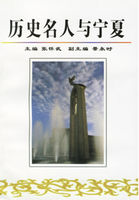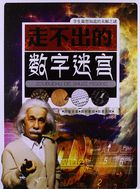England had struck at France, regardless of how the blow might injure neutrals.Now the United States sought to strike at England through the colonies, regardless of their lack of any responsibility for English policy.The "war hawks" of the South and West called loudly for the speedy invasion and capture of Canada as a means of punishing England.In so far as the British North American colonies were but possessions of Great Britain, overseas plantations, the course of the United States could be justified.But potentially these colonies were more than mere possessions.They were a nation in the making, with a right to their own development; they were not simply a pawn in the game of Britain and the United States.Quite aside from the original rights or wrongs of the war, the invasion of Canada was from this standpoint an act of aggression."Agrarian cupidity, not maritime right, wages this war," insisted John Randolph of Roanoke, the chief opponent of the "war hawks" in Congress."Ever since the report of the Committee on Foreign Relations came into the House, we have heard but one word--like the whippoorwill, but one eternal monotonous tone--Canada, Canada, Canada!"At the outset there appeared no question that the conquest of Canada could be, as Jefferson forecast, other than "a mere matter of marching." Eustis, the Secretary of War, prophesied that "we can take Canada without soldiers." Clay insisted that the Canadas were "as much under our command as the Ocean is under Great Britain's." The provinces had barely half a million people, two-thirds of them allied by ties of blood to Britain's chief enemy, to set against the eight millions of the Republic.There were fewer than ten thousand regular troops in all the colonies, half of them down by the sea, far away from the danger zone, and less than fifteen hundred west of Montreal.Little help could come from England, herself at war with Napoleon, the master of half of Europe.
But there was another side.The United States was not a unit in the war; New England was apathetic or hostile to the war throughout, and as late as 1814 two-thirds of the army of Canada were eating beef supplied by Vermont and New York contractors.
Weak as was the militia of the Canadas, it was stiffened by English and Canadian regulars, hardened by frontier experience, and led for the most part by trained and able men, whereas an inefficient system and political interference greatly weakened the military force of the fighting States., Above all, the Canadians were fighting for their homes.To them the war was a matter of life and death; to the United States it was at best a struggle to assert commercial rights or national prestige.
The course and fortunes of the war call for only the briefest notice.In the first year the American plans for invading Upper Canada came to grief through the surrender of Hull at Detroit to Isaac Brock and the defeat at Queenston Heights of the American army under Van Rensselaer.The campaign ended with not a foot of Canadian soil in the invaders' hands, and with Michigan lost, but Brock, Canada's brilliant leader, had fallen at Queenston, and at sea the British had tasted unwonted defeat.In single actions one American frigate after another proved too much for its British opponent.It was a rude shock to the Mistress of the Seas.
The second year's campaign was more checkered.In the West the Americans gained the command of the Great Lakes by rapid building and good sailing, and with it followed the command of all the western peninsula of Upper Canada.The British General Procter was disastrously defeated at Moraviantown, and his ally, the Shawanoe chief Tecumseh, one of the half dozen great men of his race, was killed.York, later known as Toronto, the capital of the province, was captured, and its public buildings were burned and looted.But in the East fortune was kinder to the Canadians.
The American plan of invasion called for an attack on Montreal from two directions; General Wilkinson was to sail and march down the St.Lawrence from Sackett's Harbor with some eight thousand men, while General Hampton, with four thousand, was to take the historic route by Lake Champlain.Half-way down the St.Lawrence Wilkinson came to grief.Eighteen hundred men whom he landed to drive off a force of a thousand hampering his rear were decisively defeated at Chrystler's Farm.Wilkinson pushed on for a few days, but when word came that Hampton had also met disaster he withdrew into winter quarters.Hampton had found Colonel de Salaberry, with less than sixteen hundred troops, nearly all French Canadians, making a stand on the banks of the Chateauguay, thirty-five miles south of Montreal.He divided his force in order to take the Canadians in front and rear, only to be outmaneuvered and outfought in one of the most brilliant actions of the war and forced to retire.In the closing months of the year the Americans, compelled to withdraw from Fort George on the Niagara, burned the adjoining town of Newark and turned its women and children into the December snow.Drummond, who had succeeded Brock, gained control of both sides of the Niagara and retaliated in kind by laying waste the frontier villages from Lewiston to Buffalo.The year closed with Amherstburg on the Detroit the only Canadian post in American hands.On the sea the capture of the Chesapeake by the Shannon salved the pride of England.















